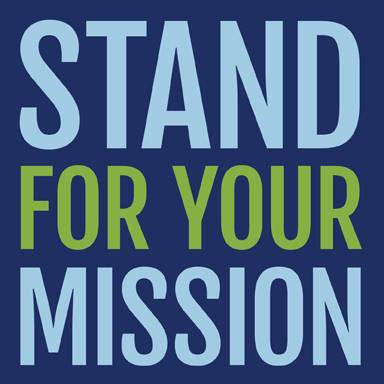Vermont Afterschool, Inc., Colchester, VT
Five years ago, Vermont Afterschool Inc. — a public/private statewide partnership dedicated to supporting and sustaining innovative learning opportunities that extend beyond the school day for all of Vermont’s children and youth — focused its energies on supporting quality improvements and changes in afterschool programming solely through a professional development and training lens. Advocacy was not something it had the experience, funding, or structure to support. That changed during a stratetic planning meeting when the partners identified advocacy as key to making a real diference. This led the board to commit to working to increase access to afterschool and summer learning programs across Vermont, particularly for children, youth, and families living in poverty and in underserved areas of the state.

Acting on its commitment
The board began by ensuring that the strategic plan include a focus on advocacy. It then put the basics in place, including training on advocacy versus lobbying and modifying the organization’s financial plan to bring in more unrestricted dollars so that its leaders could afford to work with a community organizer and lobbyist and organize a grassroots campaign. In addition, to help get the policy discussions started at the state level, four board members (almost half of the board) volunteered their time to serve on a legislative working group under Vermont’s PreK-16 Council for two full years. That committee was charged by the state legislature with investigating the need for afterschool and summer programming in Vermont and developing recommendations for how to best meet that need.
Over the past two years the board also has actively supported the development and implementation of a comprehensive statewide grassroots advocacy campaign called “Zap the Gap with Afterschool & Summer Learning,” which helped build a base of local advocates and champions across the state. Board members have spent time in the Vermont State House, testified numerous times, attended legislative meetings in their districts, spoken out at budget hearings on snowy nights in the dead of winter, collected supporter cards in all areas of the state, and made a pact that no one, including the executive director, ever has to do advocacy alone. Every time the executive director goes to the state house for any meetings or to give testimony on a bill, at least one board member, usually two, accompanies her to help respond to any questions, think about strategy, and work through any challenges or requested follow up. As a result, some board members are in the state house almost every week during the legislative session to connect with legislators and to help to move the partnership’s issue forward.

Successes
As a result of this work, successes over the past three years include the following:
- Development of an extensive database and mapping system for analyzing program location and unmet demand for afterschool and summer learning opportunities across the state
- More than 1200 supporter cards collected statewide from new advocates and champions at the local level
- Funding for afterschool and summer learning being included in legislative agendas of such organizations as Voices for Vermont’s Children, Hunger Free Vermont, and the Vermont Early Childhood Alliance.
- Three comprehensive reports to the state legislature on afterschool and summer learning from the Expanded Learning Opportunities (ELO) Working Group under Vermont’s PreK-16 Council
- Private foundations in Vermont adding afterschool and summer learning to their strategic funding priorities (e.g., McClure Foundation, Vermont Community Foundation, etc.)
- Establishment of a state fund, the Expanded Learning Opportunities (ELO) Special Fund (Vermont Afterschool is still working on a state allocation to the fund)
- Growth in the number of legislative champions who support the issue, request testimony on the issue, signed on as co-sponsors of a bill to create the structure around the ELO Special Fund, and who will actively speak to each other, in committees, and on the record about the value of afterschool and summer learning
- The Vermont Child Poverty Council naming funding for afterschool and summer learning opportunities as one of their top legislative priorities for 2018

Encountering opposition
The successes did not come without challenges, however. While Vermont Afterschool was able to get a state fund established, it continues to advocate for a state allocation to that fund. Last year, the House Education Committee proposed putting $1 million in the ELO Special Fund through a funding bill. However, just before the committee could vote the bill out, one of Vermont Afterschool’s key funders changed its previously favorable position and stepped forward in opposition. Moreover, it asked Vermont Afterschool to change its position and discontinue its advocacy efforts. When the organization did not agree, the funder threatened to cancel its funding arrangement (a significant source of funding for the organization).
The board’s response was to call an emergency meeting to discuss the situation. Faced with making a tough choice, it unanimously decided to follow the organization’s mission and to continue to advocate for what it clearly saw as in the best interest of the organization’s programs and partners, even at the risk of losing a key funder.
It was a clarifying moment for Vermont Afterschool — choosing between a safer financial path but sacrificing a piece of its mission, or keeping its mission front and center and determining how to move forward. While the organization acknowledges that the path forward may not always be easy, the board showed bold leadership in making the tough choice for the overall good of the organization and of the field that it serves.

Learn how other nonprofits used advocacy to increase their organizations’ impact and advance their missions.
